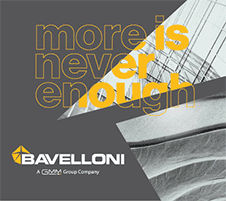From bank to glazing
Article by Jean Marc Corset, Signed Lausanne
Eva Nagy speaks of "chance". But all the same: going from the banking profession to the glazier is not commonplace. Of course, there is this family business that did not interest his brothers. She did not mind to make her professional career, especially since it is defined as a "manual". When one visits his workshop-deposit located just below the forest of Sauvabelin, near Lausanne, one understands better its choice. Because his work is more than the work of the independent craftsman as the entrepreneur focused on management. A way of doing that seems to fit well with his personality.
E. Nagy Sàrl, general glazing and mirrors, is certainly only three years old in this legal form. But she has been doing this business in Switzerland for thirty-eight years. Eva Nagy was apprenticed to SBS - the three-key bank that merged with UBS - as a business management employee. But she quickly changes direction when the small business of her parents grows and lacks arms. She will then make a glazier's CFC.
discrimination
Novice in the business, the young woman discovers an environment that is not soft with women, especially during construction appointments. "Male colleagues were very discriminating, some wanted to put the woman back home." She assumes his feminist side, believing that these attacks are due to advances in equality that are poorly experienced by some. Now that she "has experience and is taken seriously," she says she has no trouble.
She does not say as much about the vocational training of apprentices glaziers, which she knows well, and where she has recommenced the teaching of technical branches as an expert in glassmaking techniques. Despite her experience, the 59-year-old CEO now feels this generational conflict as a real socio-cultural gap. Like many teachers and parents of teenagers, she sees how easy it is to understand the reasons for this intergenerational phenomenon and apply the right recipes.
That's why, at Pavement 79, she is not uncomfortable managing her box independently, relying on only one employee. No doubt a second soon. In her office, she records the orders, delegates a part of them and takes care herself of many works. Custom pieces most of the time, because the house E. Nagy is now mainly replacing glass.
Rapid interventions
In his father's time, the company counted up to ten employees. But with the crisis of the 1990s in building and construction, we had to make choices. "I told him it did not interest me to work big. I wanted to continue to make glass replacement locally. Since we had a loyal clientele, we did not feel the crisis. "The company has thus gradually reduced its size to what it is today, focusing on its niche business. Its strength: be very reactive to the needs of customers, individuals and managers, and be able to intervene very quickly.
Conversely, and necessarily according to her choice, she has not benefited from the real estate boom in recent years. But she does not complain. She wants to keep time for her hobbies: today sewing and pottery, formerly sculpture and painting, as evidenced by a part of the workshop where once were also framed paintings. Henceforth, for her, came the time for reflection on her succession. Without children, she thinks about ceasing her activity or handing over the business. And why not, possibly, accompany a buyer?
Meeting at the barracks
It is true that Nagy is also the story of his parents, over 80 years old and still alive. That of two Hungarian refugees who fled their country after the Budapest uprising against the communist regime and the Soviet tutelage. Bertalan, the glazier who came from the capital, met his future wife, Anna, from a region close to the Austrian border, at the barracks of La Pontaise.
In 1964, the year of the National Expo, the glazier starts his own business and both create their business at Avenue du Mont-Blanc, near the Comptoir. In 1979, they bought the pavement road building and its depot, which allowed them to have a few specialized machines and a nice stock of glasses of all kinds, big and small, and mirrors. We see many with reliefs or prints, and vintage colors that remind us of the windows of old farms or the decorations of villas of the 1960s.
The company processes safety glass,








